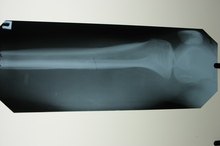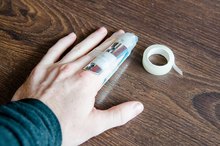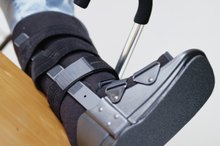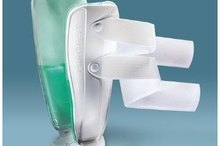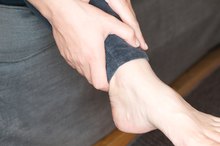What Are the Different Types of Splints?
Splints are used to immobilize an extremity that has been injured. The injury can be a broken bone or a severe sprain. Splinting provides stabilization of the injury, some amount of pain relief and prevention of further injury. Splints are often applied as a temporary measure until more definitive orthopedic care is initiated.
If you are experiencing serious medical symptoms, seek emergency treatment immediately.
Soft Splints
Splinting often starts either at home or by emergency medical providers. The simplest form of splinting is soft splinting, which can be provided with the use of a pillow or blankets. The splint is secured around the area of injury and held in place with tape or ties. Even the soft splint will provide the patient some support for the injured extremity and comfort. Pre-made soft splints, which are occasionally used in hand or wrist injuries, will slide on like a glove and are adjusted with the use of laces to tighten and conform the splint.
- Splinting often starts either at home or by emergency medical providers.
- Pre-made soft splints, which are occasionally used in hand or wrist injuries, will slide on like a glove and are adjusted with the use of laces to tighten and conform the splint.
Hard Splints
Air Cast Vs. Plaster
Learn More
Hard splints are another type of splint used for extremity injuries. Hard splints can be as simple as using a cardboard box or a padded board. Some hard splints can be made out of fiberglass or plaster that can be molded to fit the patient's extremity. Splints made from plaster or fiberglass are named according to the area of injury they are being applied to. A splint specifically used to treat a thumb injury is called a thumb spica. For a wrist or forearm injury, the volar splint is used, and for injuries to the hand and fist area, a boxer splint is applied. Pre-made aluminum splints are often used to stabilize fingers.
- Hard splints are another type of splint used for extremity injuries.
- Some hard splints can be made out of fiberglass or plaster that can be molded to fit the patient's extremity.
Air or Vacuum Splint
Air or vacuum splints are a type of splint available and used by some providers for treating orthopedic injuries. Air or vacuum splints conform well to the injured extremity. According to "Sheehy's Emergency Nursing Principles and Practice," excessive pressure from these type splints can compromise circulation 1. The air splints also stick to the skin and can cause irritation.
- Air or vacuum splints are a type of splint available and used by some providers for treating orthopedic injuries.
- According to "Sheehy's Emergency Nursing Principles and Practice," excessive pressure from these type splints can compromise circulation 1.
Traction Splints
How To Splint a Finger
Learn More
Traction splints are used to support a broken bone, decrease the amount of deformity and provide traction to keep the bones aligned and to prevent them from moving. Traction splints are often used for injuries in either the femur or mid-shaft lower leg.
Related Articles
References
- "Sheehy's Emergency Nursing Principles and Practice"; Mosby Elsevier; 2010
- "Sheey's Manual of Emergency Care"; Mosby Elsevier; 2005
- Gray K, Briseno MR, Otsuka NY. The association between capillary refill time and arterial flow in the pediatric upper extremity. J Pediatr Orthop B. 2008;17(5):257-60. doi:10.1097/BPB.0b013e32830b6209
Writer Bio
Robin Gilbert has been writing professionally since 1998 and specializes in health-care topics. Her writing has appeared in the "Emergency Nursing Connection," "Nursing Management Secrets" and "Comprehensive Care of the Pediatric Patients." Gilbert has her Master of Science in nursing from St. Joseph's College in Maine. She has more than 20 years experience in emergency nursing and is a CEN and CPEN.
